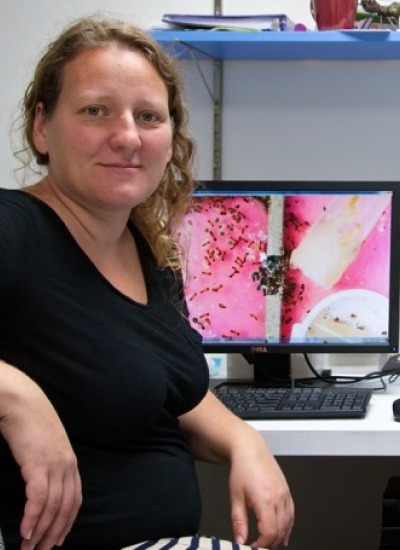Anna R Dornhaus
Publications
PMID: 21847618;Abstract:
In some group-living organisms, labor is divided among individuals. This allocation to particular tasks is frequently stable and predicted by individual physiology. Social insects are excellent model organisms in which to investigate the interplay between physiology and individual behavior, as division of labor is an important feature within colonies, and individual physiology varies among the highly related individuals of the colony. Previous studies have investigated what factors are important in determining how likely an individual is, compared to nestmates, to perform certain tasks. One such task is foraging. Corpulence (i. e., percent lipid) has been shown to determine foraging propensity in honey bees and ants, with leaner individuals being more likely to be foragers. Is this a general trend across all social insects? Here we report data analyzing the individual physiology, specifically the percent lipid, of worker bumble bees (Bombus impatiens) from whom we also analyze behavioral task data. Bumble bees are also unusual among the social bees in that workers may vary widely in size. Surprisingly we find that, unlike other social insects, percent lipid is not associated with task propensity. Rather, body size closely predicts individual relative lipid stores, with smaller worker bees being allometrically fatter than larger worker bees. © 2011 Springer-Verlag.
Pagination
- First page
- …
- 15
- 16
- 17
- …
- Last page


